Have you ever hear of “matcha”?
It is a strong Japanese green tea prepared from very finely ground green tea leaves. It’s usually served in a wide flat bottomed bowl, so that it can be whisked with the bamboo whisk to form the characteristic bubbles.

Its a traditional drink in Japan and there are a lot, and I mean a lot of matcha based drinks and sweets.
Funny thing is, we rarely have the actual authentic drink with the bowl. I at least have not had one in years.
But there are a wide variety of matcha drinks and the Matcha Latte is one of them.
In many ways, matcha is like a green tea espresso. Its very strong, it uses very finely ground beans/leaves, and has bubbles on top. It’s no surprise that matcha lattes became so wide spread in Japan.
So even though this is technically not related to coffee, I naturally had to try making it with my espresso machine.
There was a slight difference between espresso and matcha for drawing latter art so I would like to share a tip I found with you today.
The tip is to pour some foamed milk to lay the base as you normally would with espresso, but give it a good stir before starting your latte art pour.
Let’s step back and let me explain.
Preparing your matcha
So matcha almost always is sold in powder form. This is not like instant coffee, its not a freeze dried version of the drink, but it is actually ground up tea leaves.
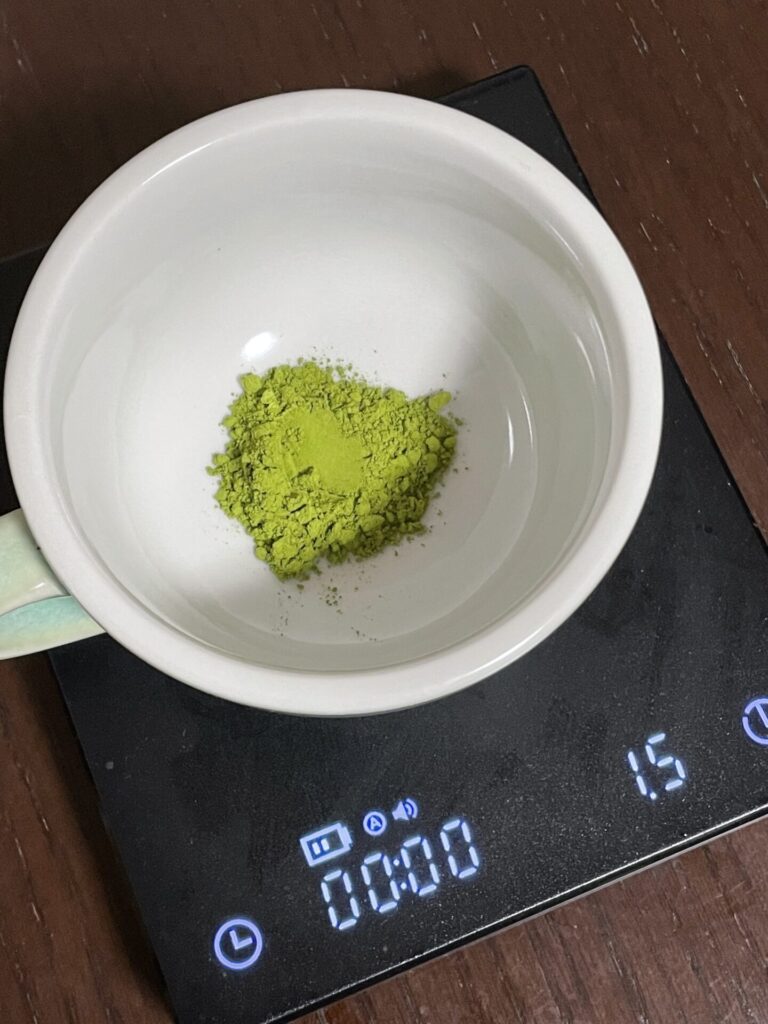
The particle size of matcha power is much finer than espresso, actually it finer than flour. Traditionally they use a stone mill to grind up the leaves.
Self grinding coffee beans is a natural thing for coffee enthusiasts, but I really have not heard of anyone grinding their own matcha. (obviously I could be heavily biased here though…)
The way you prepare matcha is to simply mix the matcha power with hot water. You would need about 1.5g for a 6oz cup of latte. Mix it with about 30g of hot water. For a proper matcha you would whisk this to form the bubbles, but for a matcha latte there is no need for that. Just give it a good stir with a spoon.
Optionally you could optionally add some sugar here if you like.
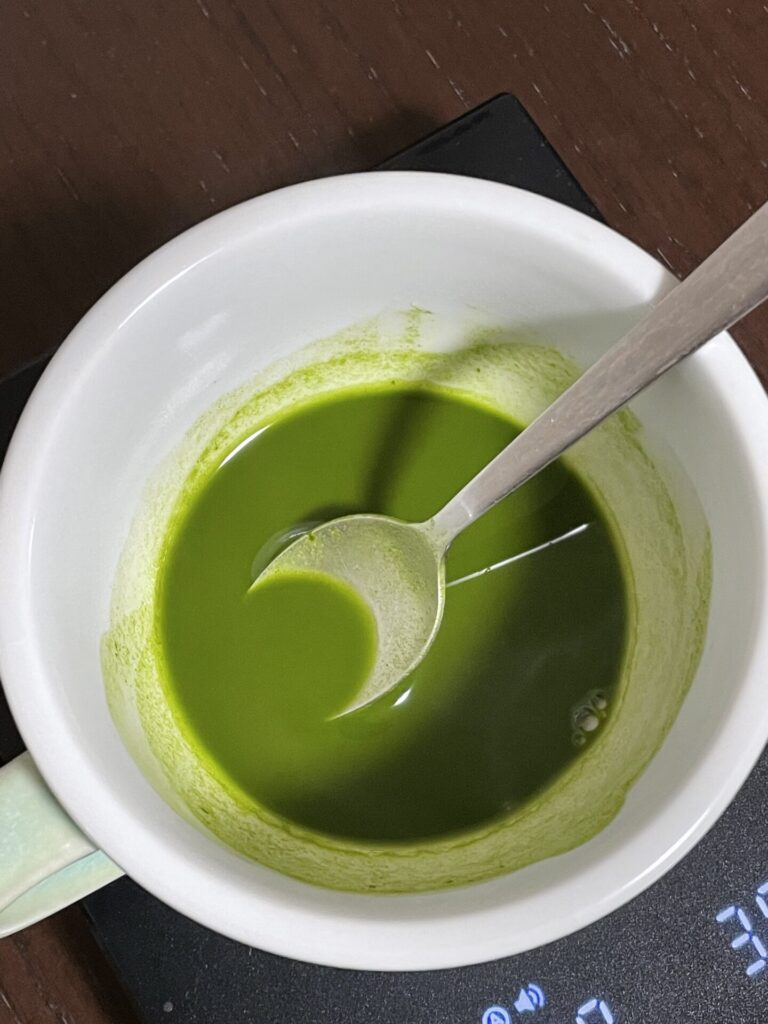
I did mention that matcha is like espresso, but there is a key difference. With espresso you are dissolving soluble materials from the coffee grounds into the water. The solids are left behind for the most part. On the other hand with matcha, you are mixing the matcha powder with the water and drinking it together. You do not filter out the solids for matcha. This is why matcha powder is ground so fine.
If you try pulling a shot with matcha powder, your espresso machine will definitely stall. And it would be much too expensive to use like 18g of matcha powder in 1 shot.
Pouring the Latte Art : What happens if you keep the same technique as espresso?
Prepare your foamed milk as you would when you are pouring latte art with espresso.
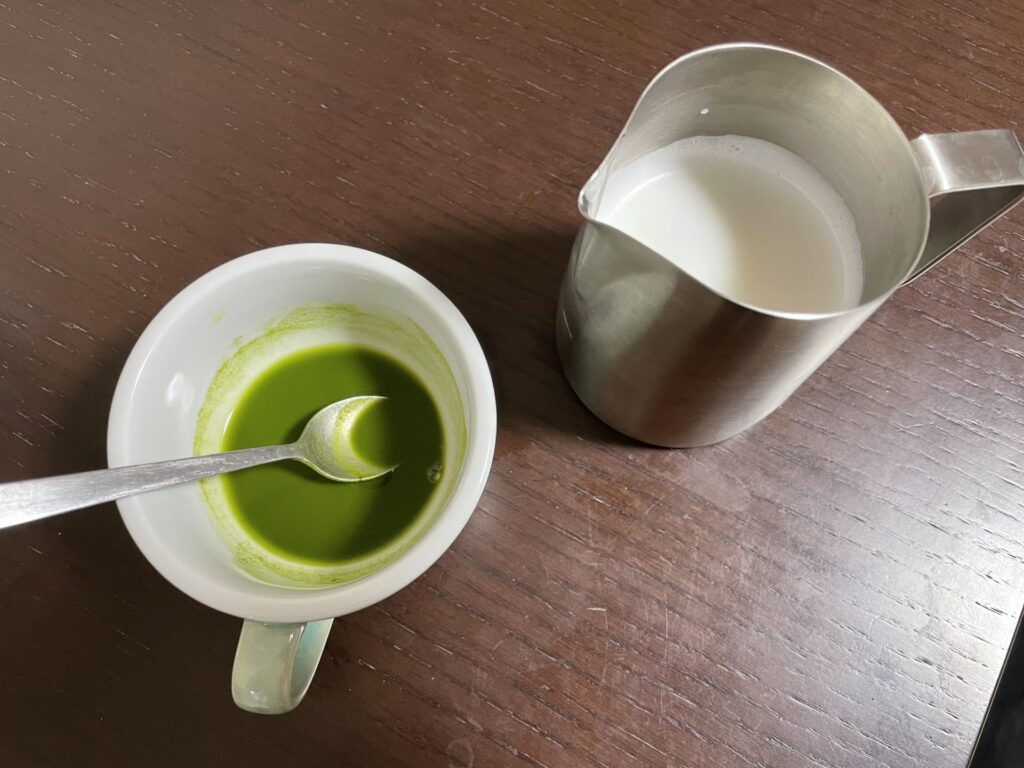
If you simply use the same technique to pour your latte art, and just substituted matcha for the espresso, what I found was that the white foam just spread out too much. The base, which is the milk you mix with the matcha at the start is too thin and seems to provide not enough resistance to the white foam you pour later.
So I ended up with a drink which was mostly white… (I guess it would work if this is what you are going for)
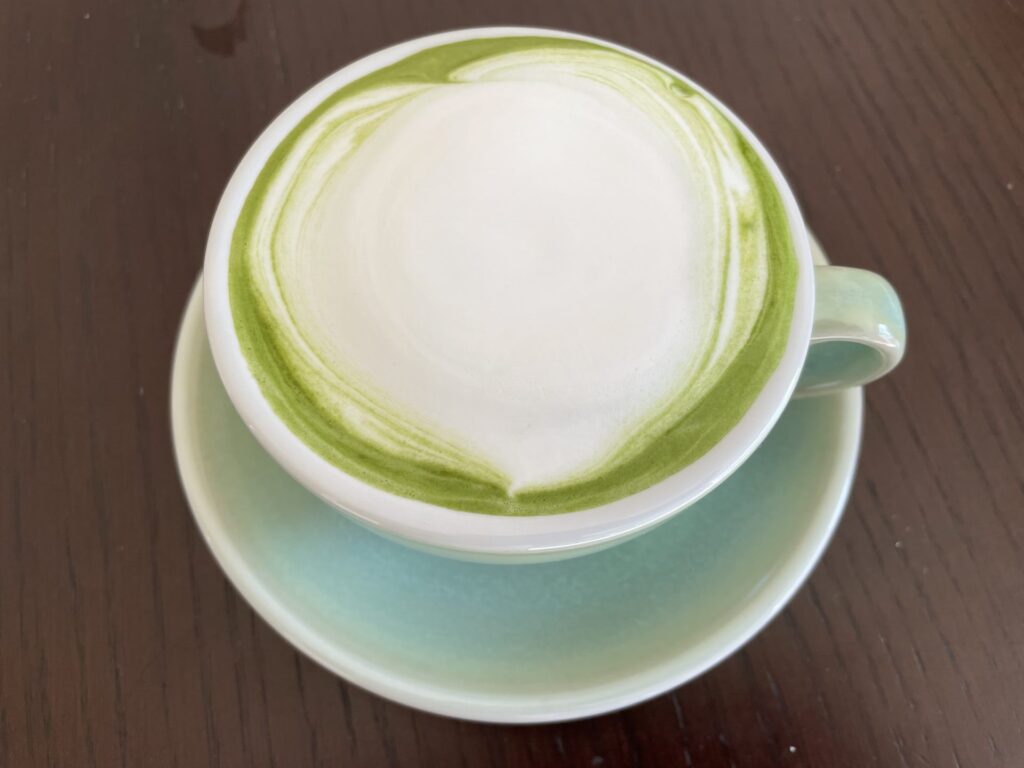
I don’t know the reason for this difference, it could be the lack of crema in the matcha, or a difference in the viscosity of espresso and matcha.
I tried adjusting the ratio of the base and stuff but that did not seem to work.
The Trick
After some trial and error, I found a trick that works quite well.
This is to pour the base and stir it with a spoon, before starting to pour your art.
This is what it looks like right after pouring the base. As you can see most of the foam is white. Matcha seems to be more difficult to integrate with the milk foam than espresso.
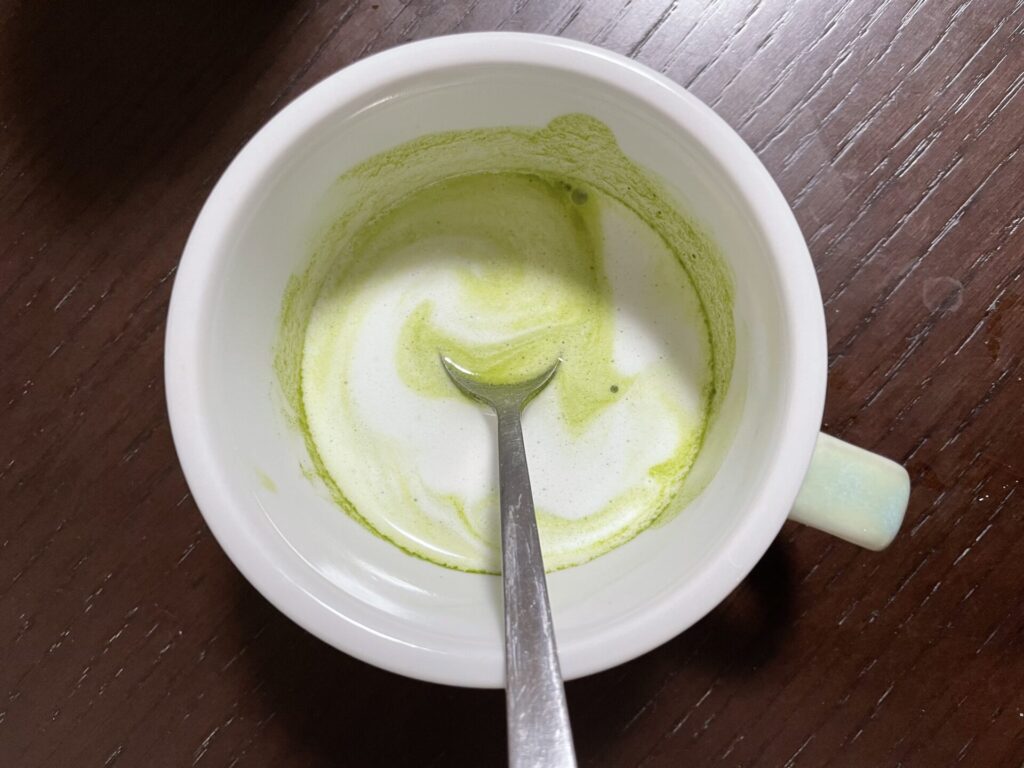
But if you give it a good stir with a spoon, you will get a very nice green foam.
You should try to avoid making big bubbles as you see in the photo. But they can be popped afterwards.
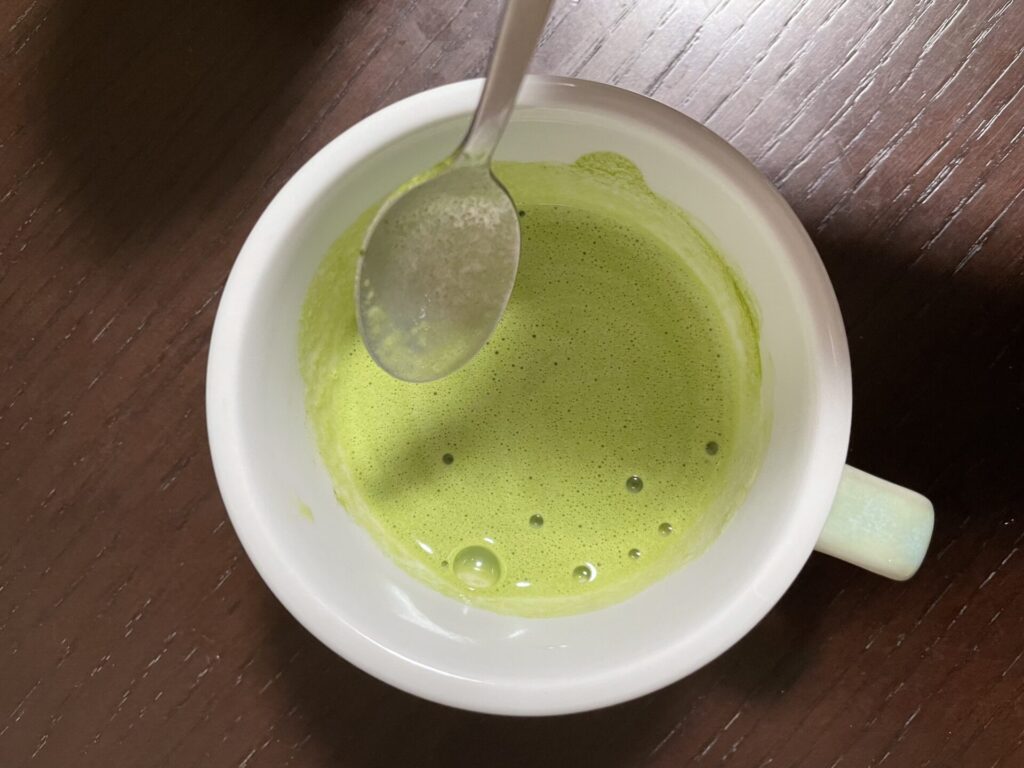
Once you have a nice green base, you can pour your latte art as normal, and you should get a much nicer design.
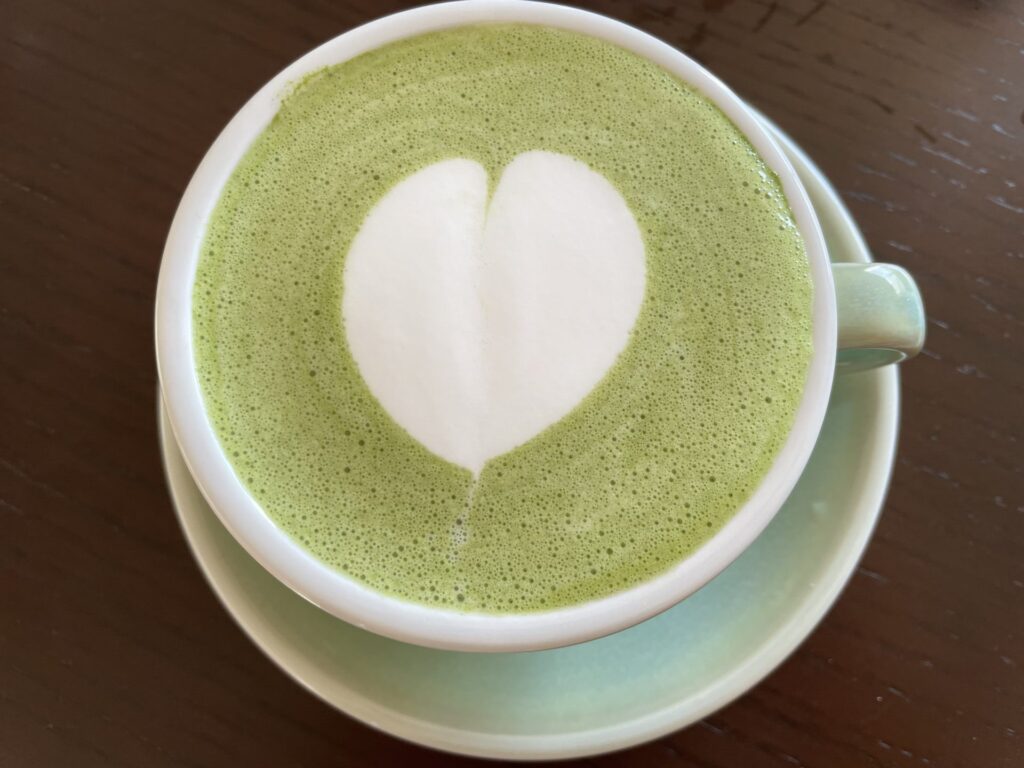
My latte art skills are still far too limited, but I’m sure you would agree that this pour is much more decent than the first try I showed.
So this was a quick guide on making matcha latte.
If you want to switch things up a little bit, matcha latte might be a fun little drink to try out.
By the way, matcha has similar levels of caffeine as coffee per serving, don’t go drinking too many of these at once.




コメント